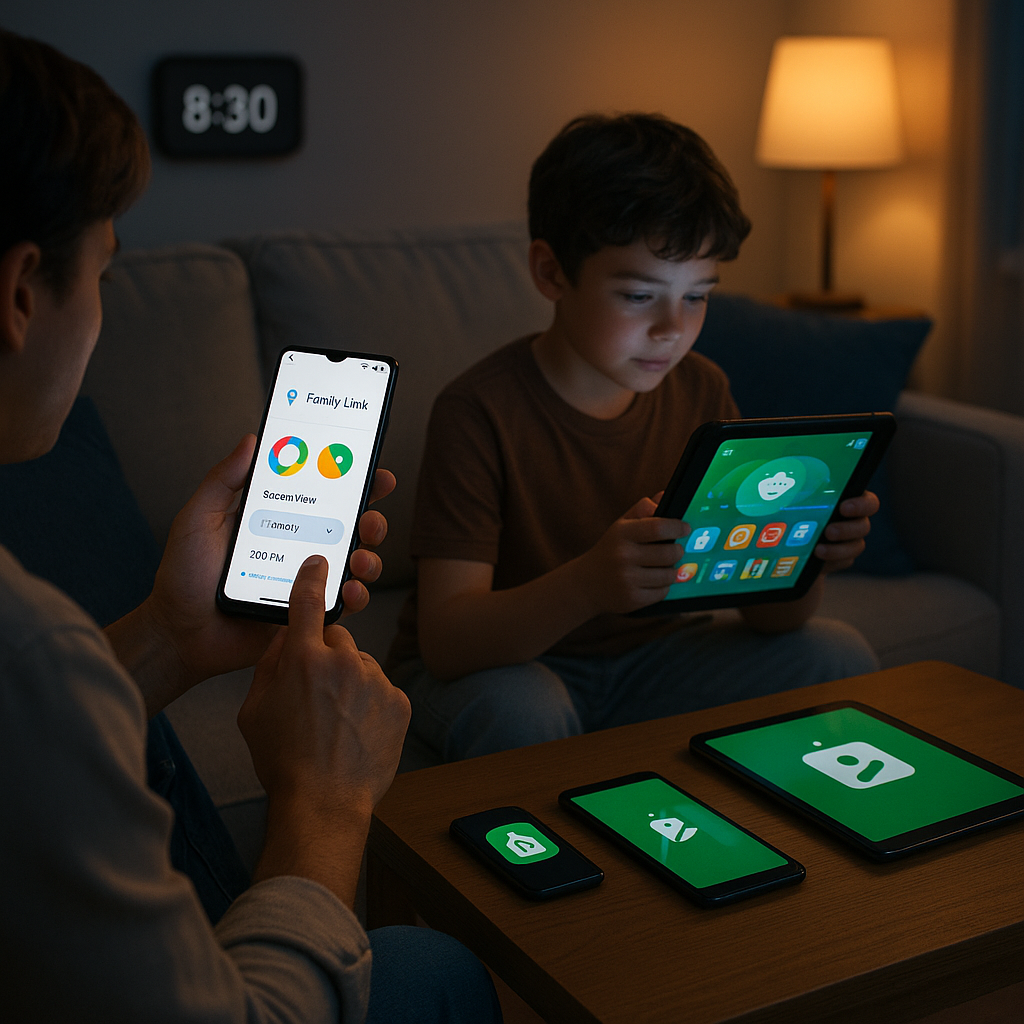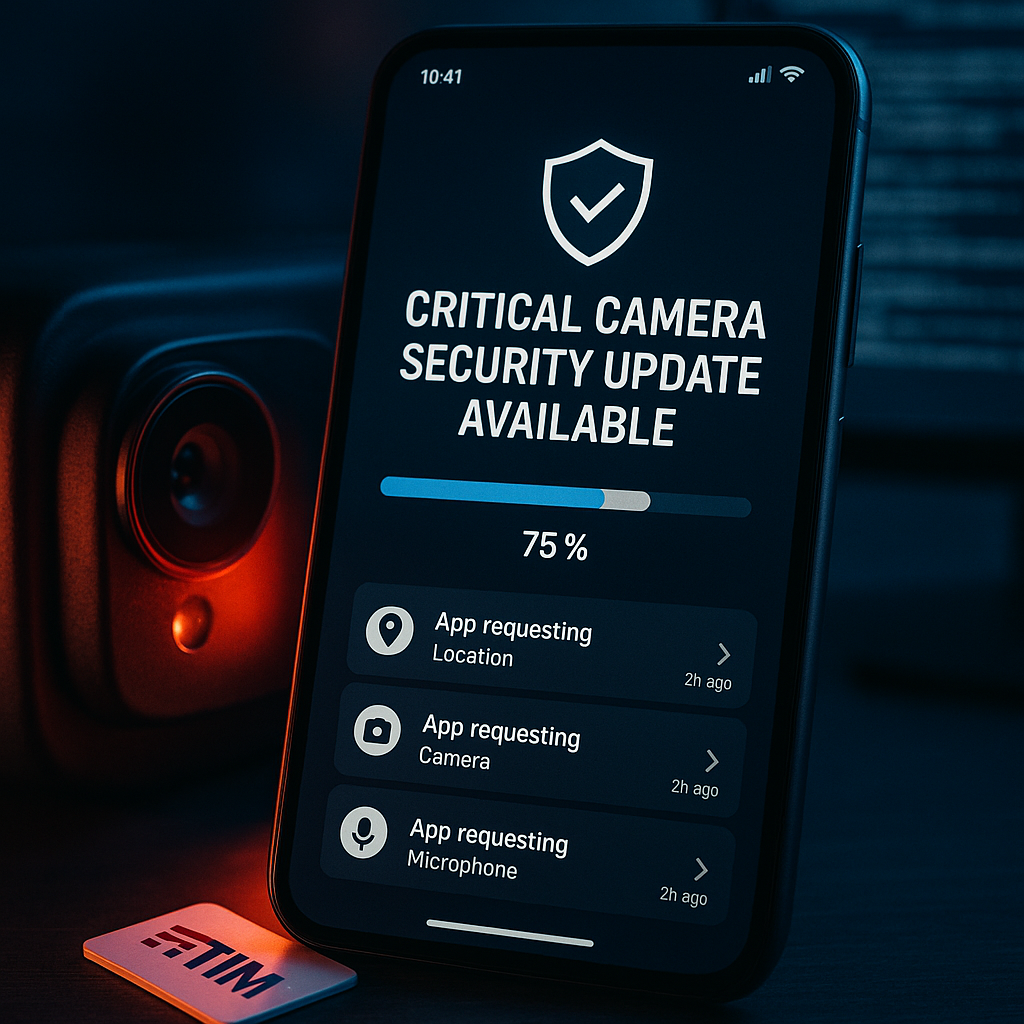Key Takeaways
Navigating digital parenting in 2025 requires mastering the most effective Android parental controls to keep your child’s device both safe and age-appropriate. Whether you are just starting your digital safety journey or looking to enhance your current setup, these key takeaways outline the essential steps and tools available, both free and paid, to help you create a secure, kid-friendly experience on any Android device.
- Choose the right parental control app for your needs. Evaluate reliable free options such as Google Family Link for core monitoring and screen time management, or consider premium apps featuring advanced tools like location tracking, content filtering, and real-time alerts across multiple devices and platforms.
- Set up Google Family Link for fundamental controls. This free, official Google service enables you to manage your child’s screen time, approve or block app downloads, set device bedtimes, and receive regular activity reports, all from your own device.
- Expand protection with advanced parental control apps. For today’s digital landscape, paid solutions offer vital features including social media monitoring, keyword alerts, location history, and cross-device management. This gives you more precise control and insight over your child’s digital experience.
- Empower children with tailored rules. Establish custom ground rules that promote healthy tech use, such as time limits, safe browsing modes, and specific app permissions, aligned with your child’s age and your family’s values.
- Monitor and manage devices remotely. Gain peace of mind with the ability to pause device activity, lock screens during homework or bedtime, and make instant adjustments from anywhere. This enables you to respond quickly to concerns or emerging risks.
- Stay ahead with evolving safety technology. The best parental control apps continually update to address new cyber threats and popular apps, ensuring your digital parenting strategy adapts proactively to new challenges.
With these smart strategies and tool selections, you will be ready to confidently create and sustain a child-safe digital environment. Continue reading for in-depth setup instructions, trusted app recommendations, and actionable tips to make Android parenting simpler and more secure. No tech expertise required.
Introduction
Handing your child an Android device opens up a world of possibility, but it also raises critical questions about safety and responsibility in today’s connected landscape. Are your current controls powerful enough to protect your child, or should you be leveraging new solutions designed to keep pace with rapidly evolving digital risks in 2025?
Setting up Android parental controls today goes well beyond restricting screen time. It’s about implementing child-friendly settings uniquely tailored to your family’s priorities and your child’s developmental stage. Whether you are considering free options like Google Family Link for the essentials or need paid features such as real-time location tracking and advanced content filtering, modern digital parenting tools empower you to preserve your child’s independence without compromising peace of mind. This guide walks you through the essential steps, features, and smartest parental control apps for building a secure, age-appropriate Android experience.
Un passo avanti. Sempre.
Unisciti al nostro canale Telegram per ricevere
aggiornamenti mirati, notizie selezionate e contenuti che fanno davvero la differenza.
Zero distrazioni, solo ciò che conta.
 Entra nel Canale
Entra nel Canale
Built-in Android Parental Controls
Understanding Google Family Link
Google Family Link stands at the center of Android parental controls, offering a comprehensive suite of monitoring tools and management features. The latest 2025 release introduces AI-powered content filtering, smarter screen time analytics, and enhanced real-time activity reports. This makes parental oversight both effective and intuitive.
By linking a parent’s Google account with their child’s device, Family Link allows you to:
- Track your child’s real-time location with geofencing alerts for extra safety
- Monitor and set restrictions for app usage and downloads
- Manage daily screen time with adaptive scheduling tools
- Filter apps and web content to ensure age-appropriate access
- Review and approve app and in-app purchases
- Access detailed weekly and monthly activity reports to identify patterns and potential risks
To set up Family Link, go to Settings > Digital Wellbeing & Parental Controls > Family Link on your child’s Android device. The setup process is quick and user-friendly, typically completed within 10-15 minutes, with on-screen instructions guiding you step by step.
Essential Safety Features
Beyond Family Link, Android’s built-in safety toolkit has evolved to offer deeper protection. The main controls reside under Settings > Security > Child Safety, ensuring robust safeguards are in place.
Key protections include:
- Enforced Safe Search across browsers for filtered web results
- Integrated YouTube Kids support with customizable content filters and viewing limits
- App verification to block installations of potentially harmful applications and prevent unverified downloads
- Location sharing settings with privacy-first controls and emergency protocols for quick response
- Smart notification filtering to block messages and content flagged as inappropriate or risky
These native features function seamlessly with Family Link, establishing a strong security net for young users while balancing the need for independence and exploration.
Advanced Parental Control Solutions
While Android’s built-in protections are thorough, modern digital risks often require more specialized tools. Third-party parental control apps offer greater customization and deeper insights, particularly for families with diverse devices or older children demanding more online freedom.
Third-Party Apps and Their Features
Several top-rated parental control apps stand out in 2025 for their reliability, breadth of features, and user-centric design:
FamilyShield Pro
- Uses AI-driven content analysis to proactively block inappropriate material
- Syncs across multiple devices and platforms (Android, iOS, Windows, and more)
- Sends real-time activity alerts for instant notification of risky behaviors
- Monitors social media interactions across popular networks
- Pricing: $7.99/month for up to 5 devices
SafeKids Ultimate
- Employs behavioral pattern recognition to identify potential online threats or bullying
- Automates screen time scheduling based on activity and routines
- Recommends educational content to promote healthy tech habits
- Provides full remote device management for quick parental intervention
- Pricing: $5.99/month per device
Guardian Plus
- Offers advanced web and app filtering tailored by age and category
- Delivers app usage analytics to help parents understand time spent across platforms
- Maps historical location data for increased safety tracking
- Includes emergency SOS features for direct child-parent alerts
- Pricing: $9.99/month for unlimited devices
These platforms are designed with flexibility in mind, suitable not only for households but also for settings like schools, after-school programs, and healthcare environments where child safety is paramount.
Customization and Control Levels
Modern parental control solutions enable granular customization to address the varied needs of different age groups, maturity levels, and family values. A tiered implementation is recommended:
Ages 5-8
- Restrict app installations to a pre-approved, curated list
- Only permit access to child-friendly content and platforms
- Limit daily screen time to a healthy maximum (2 hours is widely recommended)
- Approve all contacts and messaging channels
Ages 9-12
- Allow monitored access to a broader range of apps, with content filtering in place
- Enable filtered web browsing with search restrictions
- Set flexible, context-driven screen time allowances
- Supervise initial exposure to social media with parental oversight
Ages 13-15
Un passo avanti. Sempre.
Unisciti al nostro canale Telegram per ricevere
aggiornamenti mirati, notizie selezionate e contenuti che fanno davvero la differenza.
Zero distrazioni, solo ciò che conta.
 Entra nel Canale
Entra nel Canale
- Grant more autonomy on app choices, within safe parameters and ongoing monitoring
- Maintain smart web filtering and periodic review of browsing history
- Set negotiable, balanced time limits to foster responsible self-regulation
- Oversee social media with alerts for risky keywords and behaviors
This graduated approach empowers children as they grow, encouraging digital responsibility while maintaining essential oversight.
Implementation Strategies
As you establish or refresh your child’s device boundaries, it’s crucial to implement parental controls systematically and review them regularly.
Setting Up Age-Appropriate Restrictions
The process begins by adjusting controls based on your child’s maturity. On most Android devices, age-based customization is accessible via Settings > Digital Wellbeing > Age Controls.
Effective strategies include:
- Defining and clearly communicating device usage expectations and rules
- Utilizing reward systems to reinforce responsible digital habits (for example, earning bonus time for positive online behaviors)
- Gradually increasing digital freedoms as children demonstrate responsibility and trustworthiness
- Committing to regular reviews (monthly or quarterly) to ensure restrictions remain relevant and age-appropriate
- Encouraging honest, open dialogue about online safety, potential risks, and digital citizenship
When these habits are built early, children become more resilient digital citizens across educational, social, and entertainment platforms.
Managing Screen Time and App Access
Android’s latest Smart Time Management tools, found under Settings > Digital Wellbeing > Schedule Manager, allow parents unmatched flexibility:
- Create dynamic screen time limits that adapt to school, extracurricular, or family activities
- Assign individual app-specific time quotas to curb excessive use of games or social platforms
- Initiate automatic “wind down” modes that disable stimulating content before bedtime
- Track weekly reports to identify usage trends and address problematic patterns early
- Motivate responsible behavior with digital incentives, such as unlocking access to educational apps or family-oriented games
Such smart, data-driven scheduling empowers parents and children to collaboratively create healthy screen habits. This is ideal for home, travel, and blended remote/in-person learning environments.
Monitoring and Maintenance
Ongoing success in digital parenting depends on the regular review and adaptation of your parental control strategy, ensuring continued protection as children grow and as technology changes.
Regular Review and Updates
Consistent monitoring tasks include:
- Reviewing activity reports weekly to catch signs of overuse, risky behaviors, or new app interests
- Assessing age-appropriate restriction levels on a monthly basis, adjusting as necessary
- Updating approved app lists to reflect new releases and trending applications
- Verifying that all devices are running the latest security and software patches
- Regularly talking with your child about their digital experiences, encouraging sharing of concerns
In addition to households, these review strategies are highly effective for educators and program coordinators managing child access to shared devices in educational or healthcare facilities.
Troubleshooting Common Issues
When managing parental controls, parents and guardians may face familiar challenges:
App Bypass Attempts
- Strengthen security by enabling advanced tracking in Family Link or third-party apps
- Review and update the restricted app list to prevent access to newly trending or misleading downloads
- Set appropriate consequences and discuss the reasons for restrictions
Screen Time Conflicts
- Utilize Flexible Scheduling to accommodate special events or family routines
- Set up homework mode profiles that automatically restrict entertainment apps during study times
- Customize profiles for weekends, holidays, or travel to maintain balanced routines
Content Filtering Gaps
- Switch on deep packet inspection where possible for thorough monitoring
- Continuously update the blocked keywords list for emerging slang or coded language
- Use AI-powered content recognition to catch new types of inappropriate material before they become widespread issues
By proactively addressing these challenges, parents maintain an honest, positive digital environment that supports children’s growth and well-being.
Conclusion
Today’s digital parenting on Android is more dynamic and adaptive than ever, blending robust built-in protections with advanced third-party solutions that keep families ahead of evolving online risks. With tools like Google Family Link’s AI-powered filtering, customizable screen time management, and seamless privacy and emergency safeguards, parents can tailor digital boundaries to each child’s unique needs. Supplementary apps further expand monitoring and control, tackling nuanced concerns such as app bypass attempts, content filtering challenges, and multi-device management.
Ultimately, the foundation of digital parenting success lies in a proactive mindset. Regularly reviewing settings, maintaining open communication with your child, and remaining flexible in your approach ensures that your controls evolve alongside both technology and your child’s development. Looking toward the future, those families who stay curious, adapt quickly, and prioritize trust-building will foster digital habits that empower their children far beyond screen time. The real challenge isn’t just about keeping up with change. It’s about anticipating it and shaping it to build a positive, secure, and resilient digital future for your family.





Leave a Reply